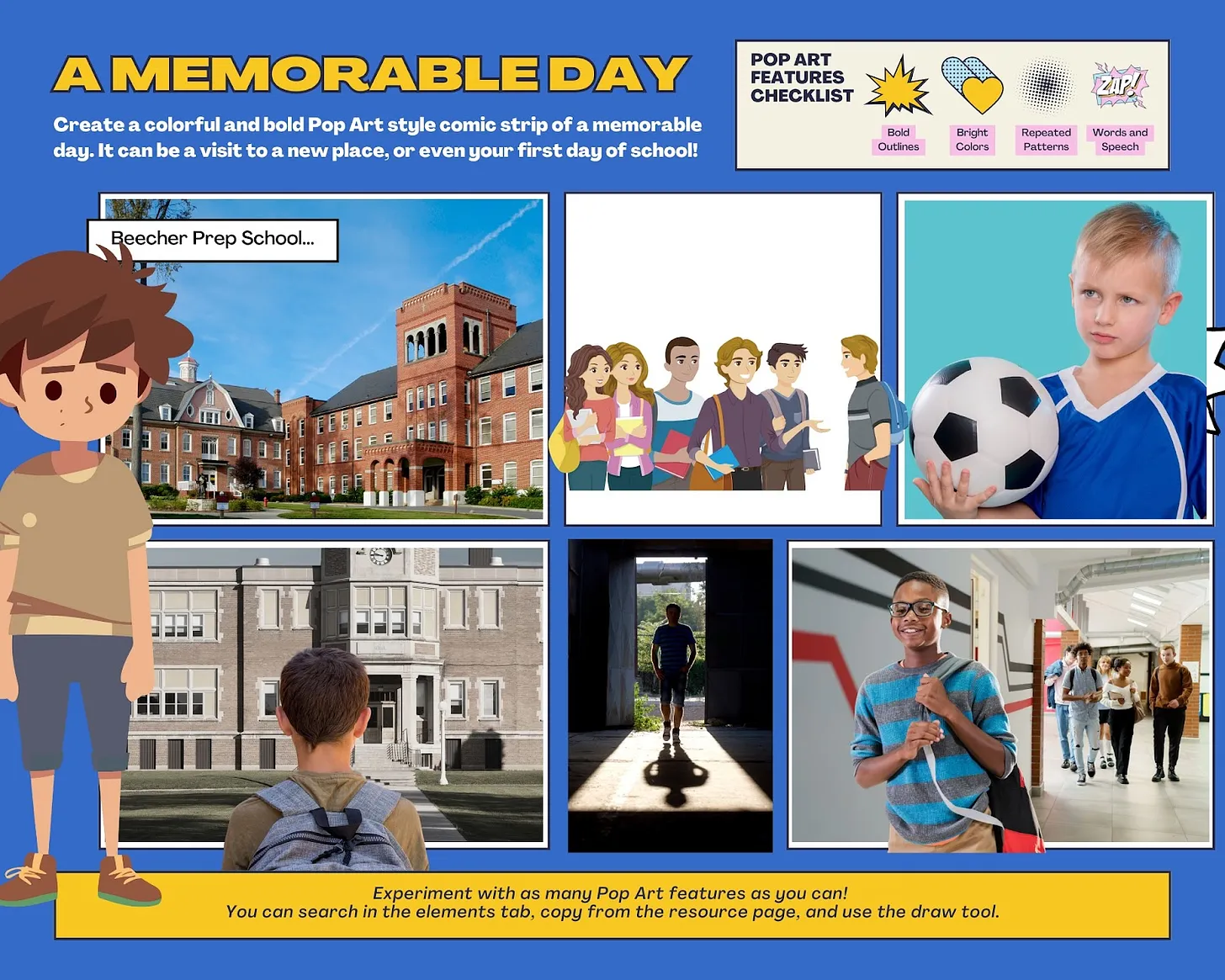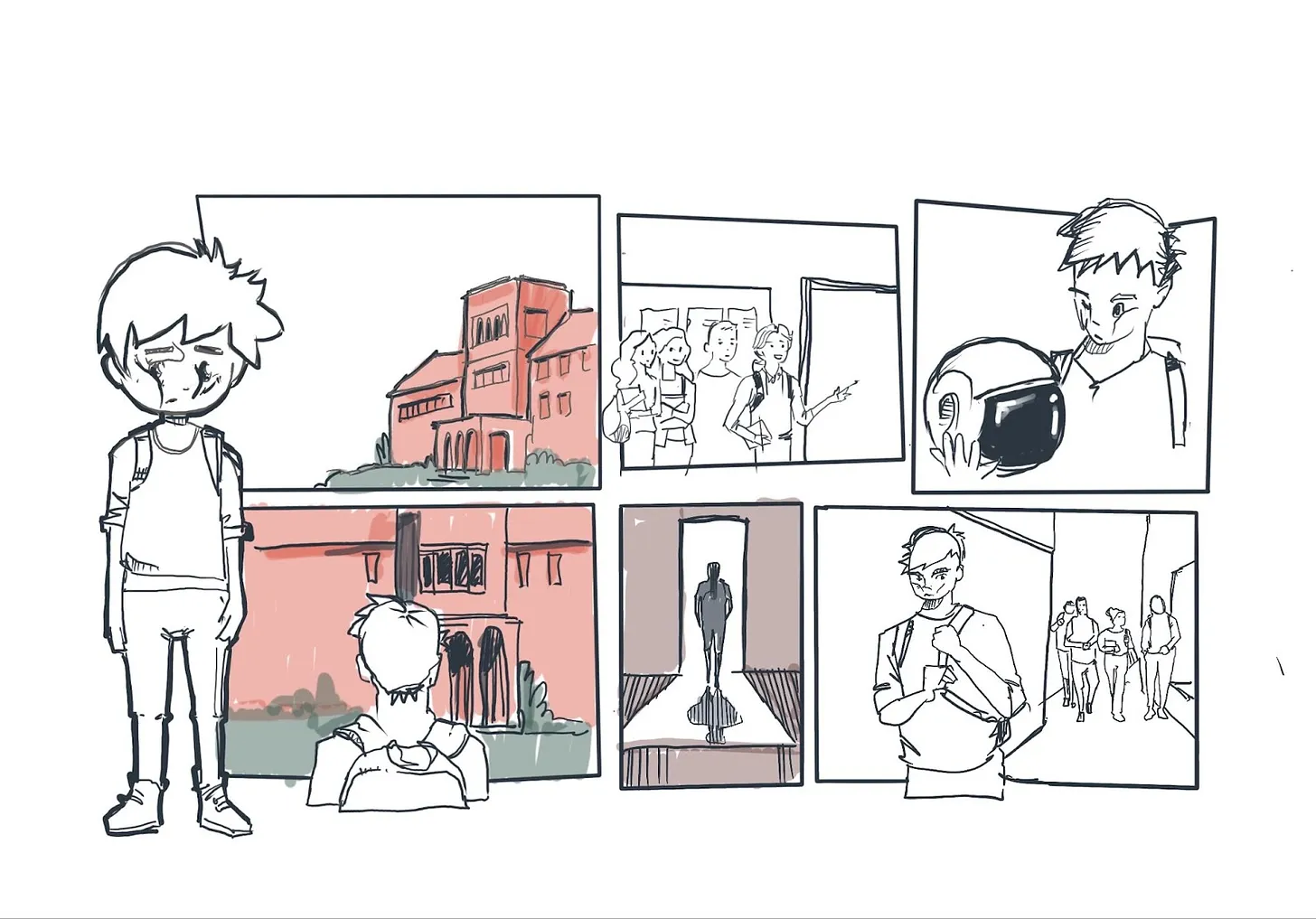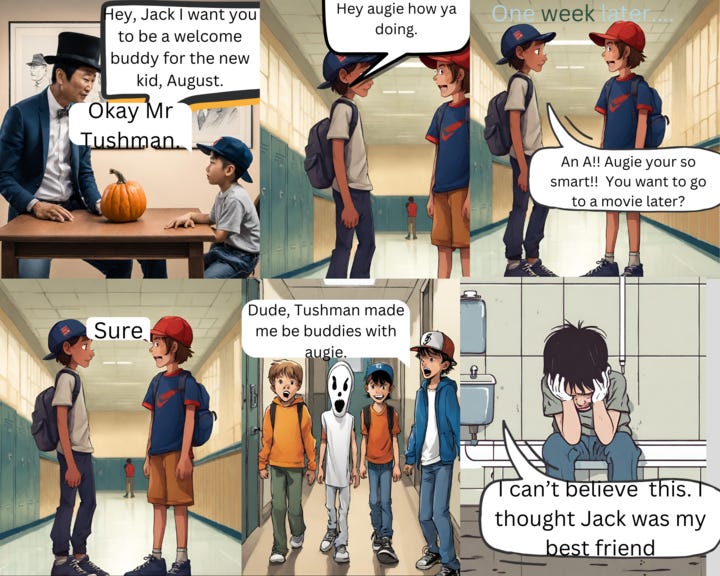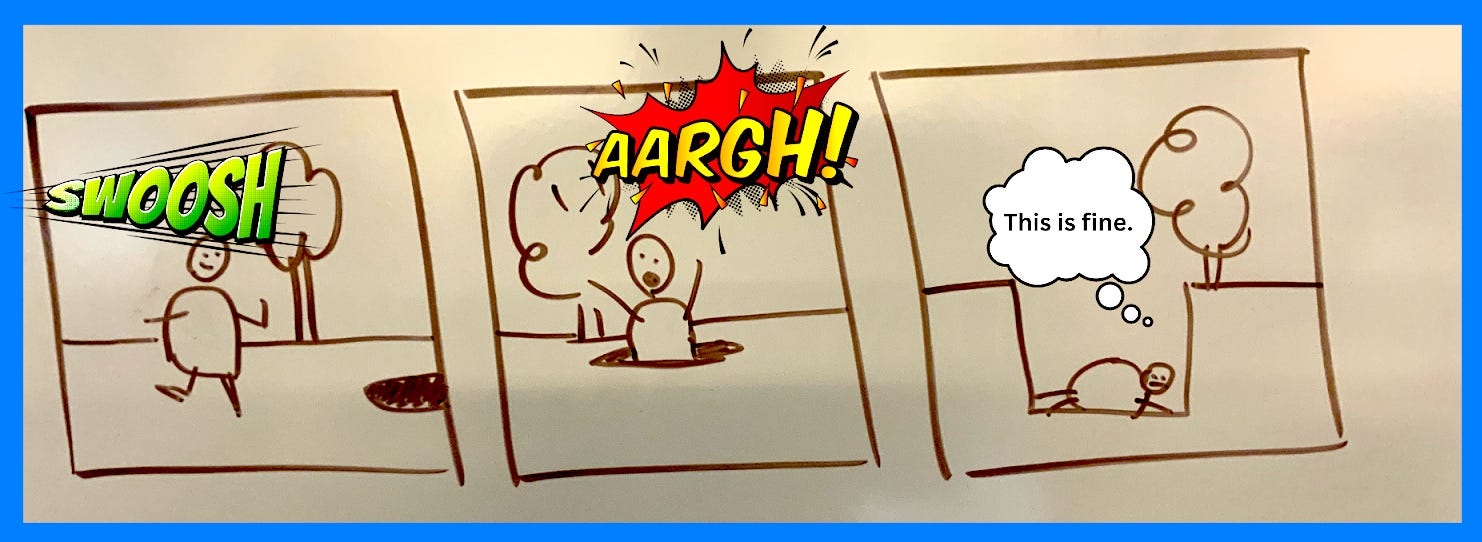I love a good comic book or graphic novel. So when Michael booked some time with me to talk about a possible comic book project with his students, I was excited to explore possibilities.. His Grade 5 Class just finished an art project where they had to complete an existing story in comic strip form. The students were really into it, so Michael felt compelled to keep up the excitement. Honestly, I think he just wanted to geek out over his own love of comics, which was fine by me — we could geek out together. 🤓

For this second comic project, Michael wasn’t concerned about the overall art quality of the students' project. Instead, his main objective was to see how well they could retell parts of the novel they were studying, Wonder by R.J. Palacio, and interpret them in a visual way.

But what tools to use?
You might be sick of hearing this, but we explored our favourite design tool, Canva, and its many comic strip templates, word bubbles, shapes, and page layouts. Once we determined Canva had what we were looking for, we asked the class to build a rough sketch for their comic. Here are a few ways the students used the tools in Canva.
- 🫥 Tracing: We used a mix of images to create the foundation for a comic and then showed the students how they could print it out and trace over it. As they traced, students added their own elements and adapted the images to be more appropriate for their story. This technique is widely used by professional illustrators. And, for students who need more structure with their drawing skills, this was a great aid!


Here’s an example where we have a boy holding a soccer ball. With our tracing, we adapted it into a space helmet, which is a prominent symbol in the book.
🤖 AI: Knowing the students would probably figure out Canva’s AI tools themselves, Michael and I decided to address it upfront. Michael wasn’t so concerned with students using Canva to generate the images, as long as they were appropriate to retelling the story. Still, we made sure to emphasize to the students that they were responsible for how they used such a powerful tool. We showed the class how, with good prompts, it was possible to create a page layout with custom images that were well-suited for this project. We emphasized using descriptive language to write their prompts. The more details, the better–we found very different results between: student wearing a space helmet and student wearing a space helmet in school, in a comic book style.I noticed that this process was an interesting way to assess the students comprehension of the book. Those with more detailed prompts likely had a better understanding of the book.
Check out Common Sense Educations’ AI Initiative and their AI Literacy Lessons for more ways to teach your students about the responsible use of AI tools.
Each frame was generated with Canva’s AI Image Generator. Speech bubbles were layered on top.
- 🎨 Mashup: For the classically artistic students, we showed them how to import their artwork into Canva to add onomatopoeia comic word, also known as Bat-Fight Words! Helpful especially if their handwriting wasn’t that neat.

After letting the students play around for almost an hour, the class came up with some pretty interesting and zany work. Some were Wonder-related, including a manga-inspired design, while others were more quirky, such as one about a duck, soccer, and baking. The class had some serious fun applying the comic book aesthetic to their own interests. 🤪
I really enjoyed showing the students these creative tools and I was thrilled to see how they interpreted the assignment to fit their own skill level.
For those of you keeping score at home, this is our 13,943th classroom project using Canva. 😝
Carlo’s Pick: Borders by Thomas King and Natasha Donovan.

I really enjoy Metis artist Natasha Donovan’s subtle quietness in her art. Her illustration style nicely compliments Thomas King’s story of a family caught between two nations. The story is suitable for Grades 4 and up.
Check out this book and more from Strongnations.com

